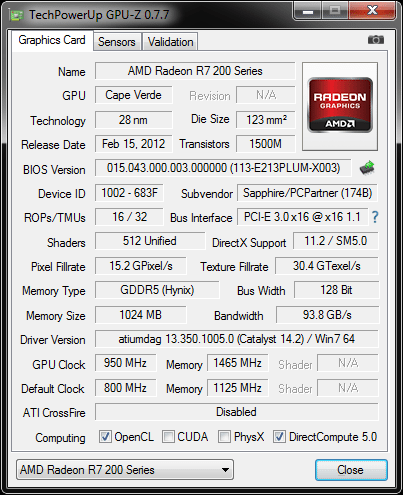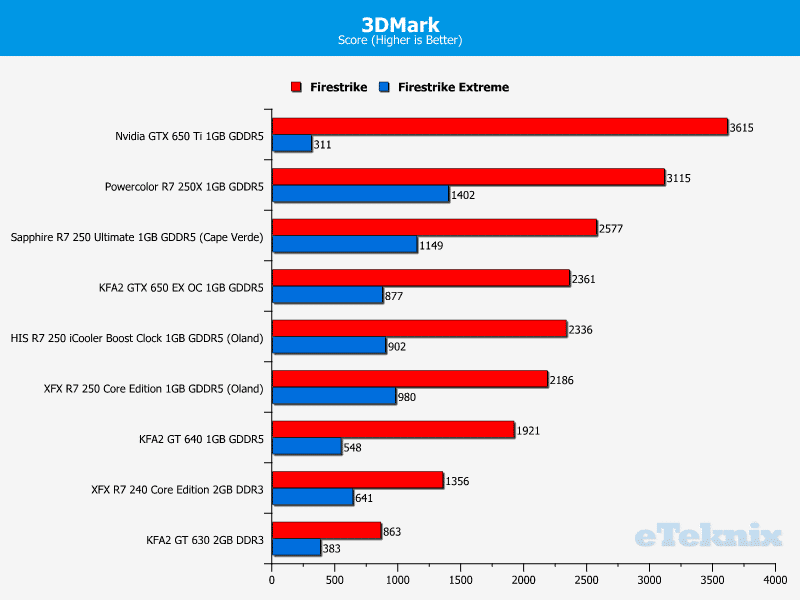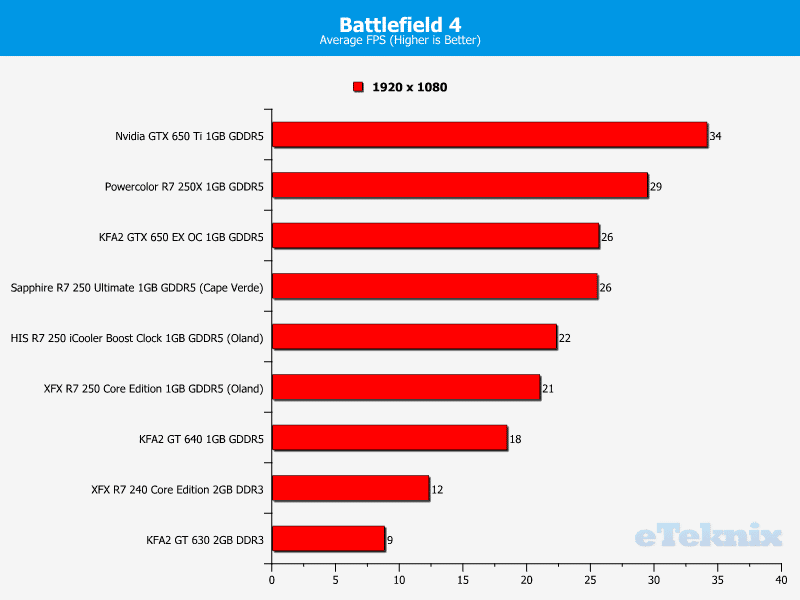Sapphire R7 250 Ultimate Passive 1GB GDDR5 Review
Ryan Martin / 11 years ago
Overclocking & Overclocked Performance
The overclocking ability of a graphics card is an important buying consideration irrespective of whether the graphics card is low end or enthusiast level. I’m sure everyone will agree that the more extra performance from overclocking – the better. In our overclocking we push each graphics card to its maximum stable core and memory frequencies. Typically we also raise the power limit to the maximum and where possible raise the voltages if this results in higher overclocks being achieved. We always aim for “24/7” stable overclocks that DO NOT result in potential heat on longevity issues so if we do raise the voltage it is still kept within safe parameters. The latest beta version of MSI’s Afterburner software is the overclocking utility of choice: this is because MSI Afterburner Beta versions typically allows you to circumvent overclocking restrictions – particularly those set by AMD.

Overclocking may not seem that impressive, we’ve only reached 950MHz core and 1465 MHz memory – other R7 250s we tested reached 1250MHz. However, as we’ve already mentioned this is an overclock on 512 GCN cores compared to other R7 250s where you’re overclocking 384 GCN cores. Sapphire’s R7 250 Ultimate beats the $120 Nvidia’s GTX 650 when overclocked – this really is a solid graphics card for $100.





















